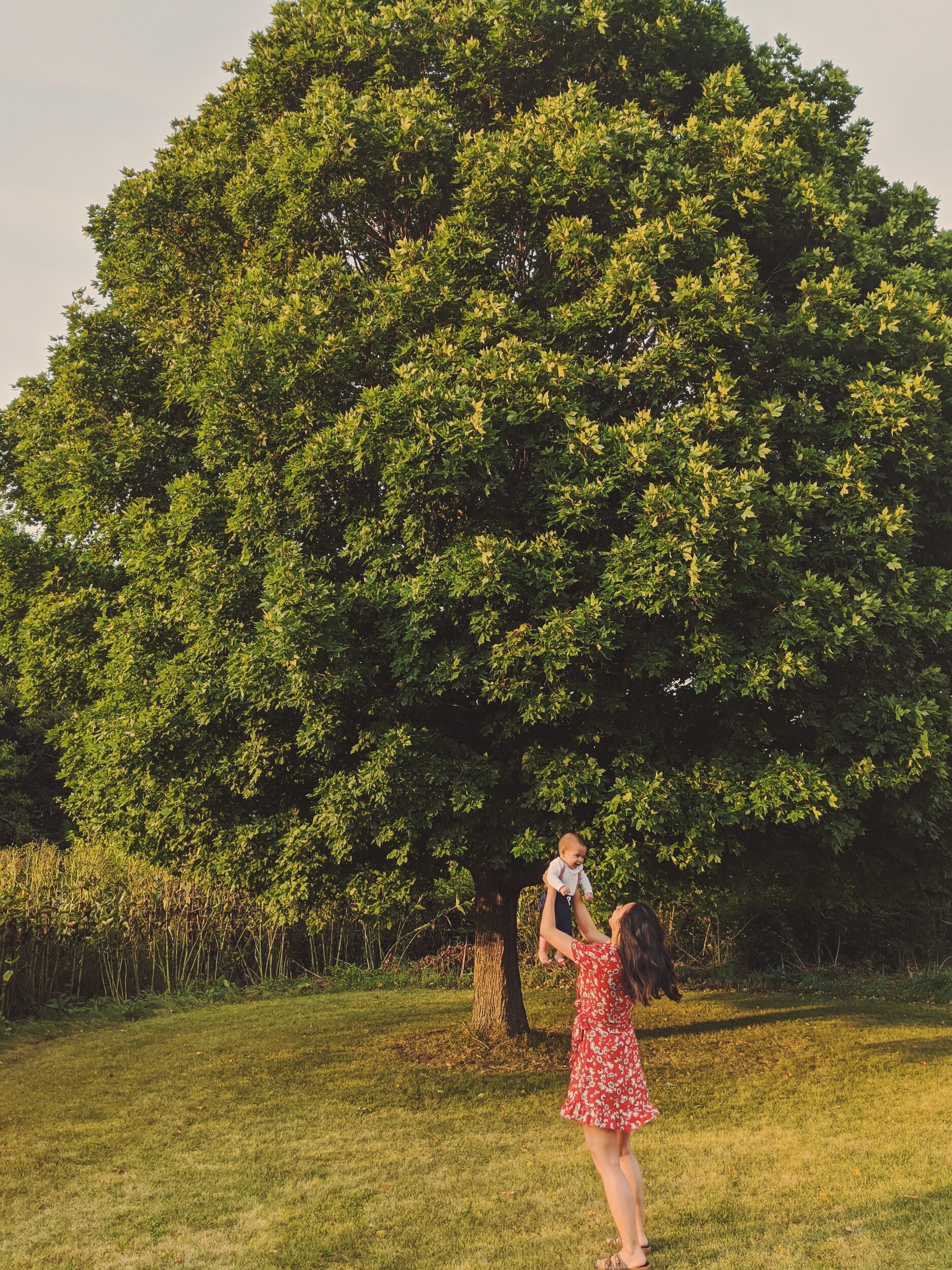The smell of sweet grass in the morning. The crunch of grass under bare feet on a hot summer day. To walk and play freely in the grass, to not worry whether you’re stepping on carcinogenic chemicals, that’s how the world should be. That’s the world our children deserve.
But instead, we live in a country where homeowners are obsessed with weed-free, perfectly manicured lawns. So much so that they’re willing to pay companies like TruGreen to spray toxic chemicals and they’re willing to use Roundup to remove dandelions.
Here’s the irony: dandelions are actually quite nutritious and a small bunch of organic dandelion greens costs $2.99 at the store when we could get them for free in our very own yards.
We are killing ourselves purely for aesthetics and it’s infuriating.
The Truth about TruGreen
I didn’t realize how prevalent pesticide use was until I had a baby and I started caring about what he was exposed to. My stomach drops every time I see a pesticide application sign at the park or in someone’s yard. I wonder why people think TruGreen is safe, why they continue to pay for it. I wonder how we got to this place in society that feels so backwards and wrong.
TruGreen says the drying process of their pesticide application takes 1-2 hours but the truth is, studies have shown that these chemicals are traceable several days later and that they run off into our water and drift into our air. Pesticide drift is real.
Here’s the truth about TruGreen:
53% of TruGreen’s products include ingredients that are possible carcinogens.
41% of TruGreen’s products include ingredients that are banned or restricted in other countries.
34% of TruGreen’s products include ingredients that are known or suspected endocrine disruptors.
28% of TruGreen products include ingredients that are known or suspected reproductive toxins.
100% of TruGreen’s products include ingredients that threaten our environment, including our water supplies.
0% of TruGreen’s pesticide application signs provide the exact time the lawn was sprayed, putting any human or animal at risk of touching the lawn before it’s dry. Also, birds and bunnies can’t read so how are they supposed to know the lawn is unsafe? There’s nothing stopping a squirrel from scampering through your neighbor’s TruGreen lawn and then into yours.
In 2020, a lawsuit against TruGreen was brought up to the Superior Court of DC.
TruGreen and Roundup both contain the weed killer, glyphosate. Last month, Bayer (the maker of Roundup) reached a $2 billion settlement to resolve around 125,000 claims that Roundup caused non-Hodgkin’s lymphoma.
Be the Change
The facts and cases against pesticides/herbicides/insecticides are mounting. A recent study found that even pesticides (e.g. DDT) banned over 20 years ago continue to show up in areas we least expect it, like nature preserves. These forever chemicals will outlive us. The damage has been done but we can stop the bleeding.
On the bright side, municipalities are slowly coming around to banning pesticides on city property - cities like Evanston, IL. Organizations like The Detox Project and Beyond Pesticides are promoting transparency and empowering individuals to create change. Companies like Sunday and Lawnbox are offering safer alternatives.
Here’s how you can help raise awareness:
Educate yourself on your city’s pest control and pesticide use. Pesticides can be found everywhere - in cities, suburbs, and rural areas.
Write to your state/municipality/HOA/block about safer pesticide use, banning pesticides altogether or at the very least, providing a schedule of when pesticides will be used. Here are letter/flyer/brochure templates you can leverage.
Sign the petition to demand that TruGreen switch to a non-toxic formula: www.change.org/bantrugreen.
Make “pesticide-free” or “ban TruGreen” signs for your lawn to raise awareness with neighbors and to let them know they can walk safely on your grass.
I often feel like an army of one challenging old ways of doing things. Or, that I’m sounding the alarm but no one wants to be inconvenienced. What keeps me going is knowing that the work I do to create a safer world for my loved ones is the most meaningful work I can do.
“A poison is a poison is a poison.”



